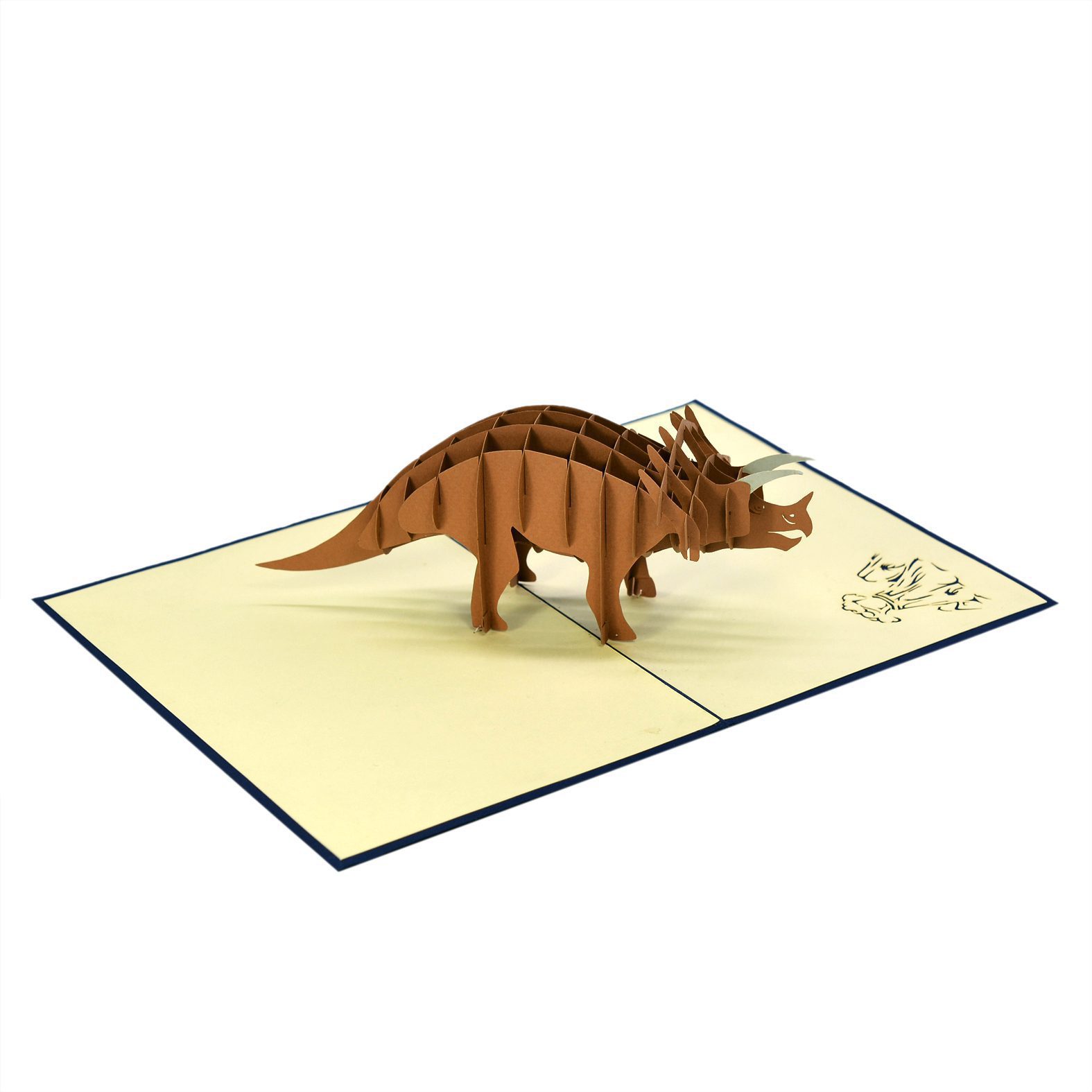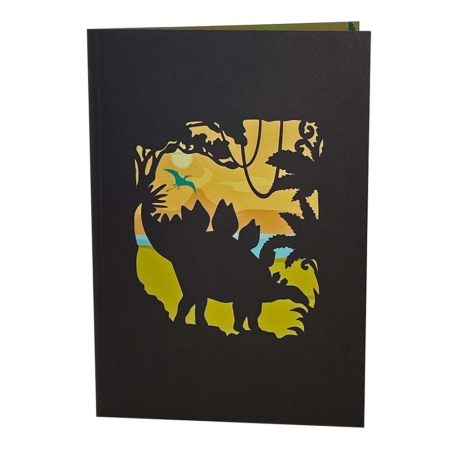Description
Triceratops dinosaurs were fairly calm animals, not attacking unless provoked. They were very social, living in large herds alongside other herbivores. They were vegan.
Message you could write:
- You’re Tricera-TOPS!”
- I dig dinosaurs and I dig you.
- Join us for a prehistoric time.
- You are Dino-Mite!
- Jurassic times call for Jurassic measures.
SIZE RELATIVE TO A BUS:

Life after extinction:
This dinosaur, 30 feet long and weighing 6-8 tons, lived 70 million years ago and comes back to life in this pop up card.
See also Dinosaur Jungle Party.
Discovery 5 October 2021:
Triceratops’ ‘lost relative’ has been discovered in New Mexico. The 72 million-year-old dinosaur named after CNN founder Ted Turner had short, massive horns.
- The new species is named Sierraceratops turneri after Ted Turner, founder of the CNN, who owns the ranch where the fossils were discovered
- It is a ‘long lost’ relative of the triceratops, but lived 6 million years before
- The new species had short, but giant horns and measured 15ft long
The fossils show the new species had short, but massive horns at the brow of its five-foot-long skull, and the extinct creature measured about 15 feet long.
Although Sierraceratops is related to the Triceratops, it lived six million years before its more famous relative.
The reanalysis of a fossil found more than 20 years ago in New Mexico has resulted in the discovery of an entirely new species of horned dinosaur. Named Sierraceratops turneri, the Cretaceous beast is a sign that dinosaurs were more diverse than we thought—and that many new species are still waiting to be found.
During the late 1990s, CNN founder Ted Turner allowed a group of paleontologists to explore his ranch near Truth or Consequences, New Mexico. The billionaire chose a spot atop the Hall Lake Formation, which features sediments dating back to the Late Cretaceous. The paleontologists managed to find a partial dinosaur skeleton, which they identified as belonging to Torosaurus, a ceratopsid or horned dinosaur, that lived 66 million to 68 million years ago.
Recently, Sebastian Dalman, a paleontology student at the New Mexico Museum of Natural History & Science, along with his colleagues, decided to take another look at the fossil. The specimen consisted of the premaxilla (beak), brow horn, frills, shoulder girdle, ribs, and vertebrae. Upon closer inspection, the scientists came to realize that the bones had been misidentified—they were dealing with an entirely new species. Now designated Sierraceratops turneri, the new ceratopsid dino was named in honor of Sierra County and the media mogul. A comparative analysis with other known ceratopsids allowed the team to confidently declare the discovery of a distinct species.







































